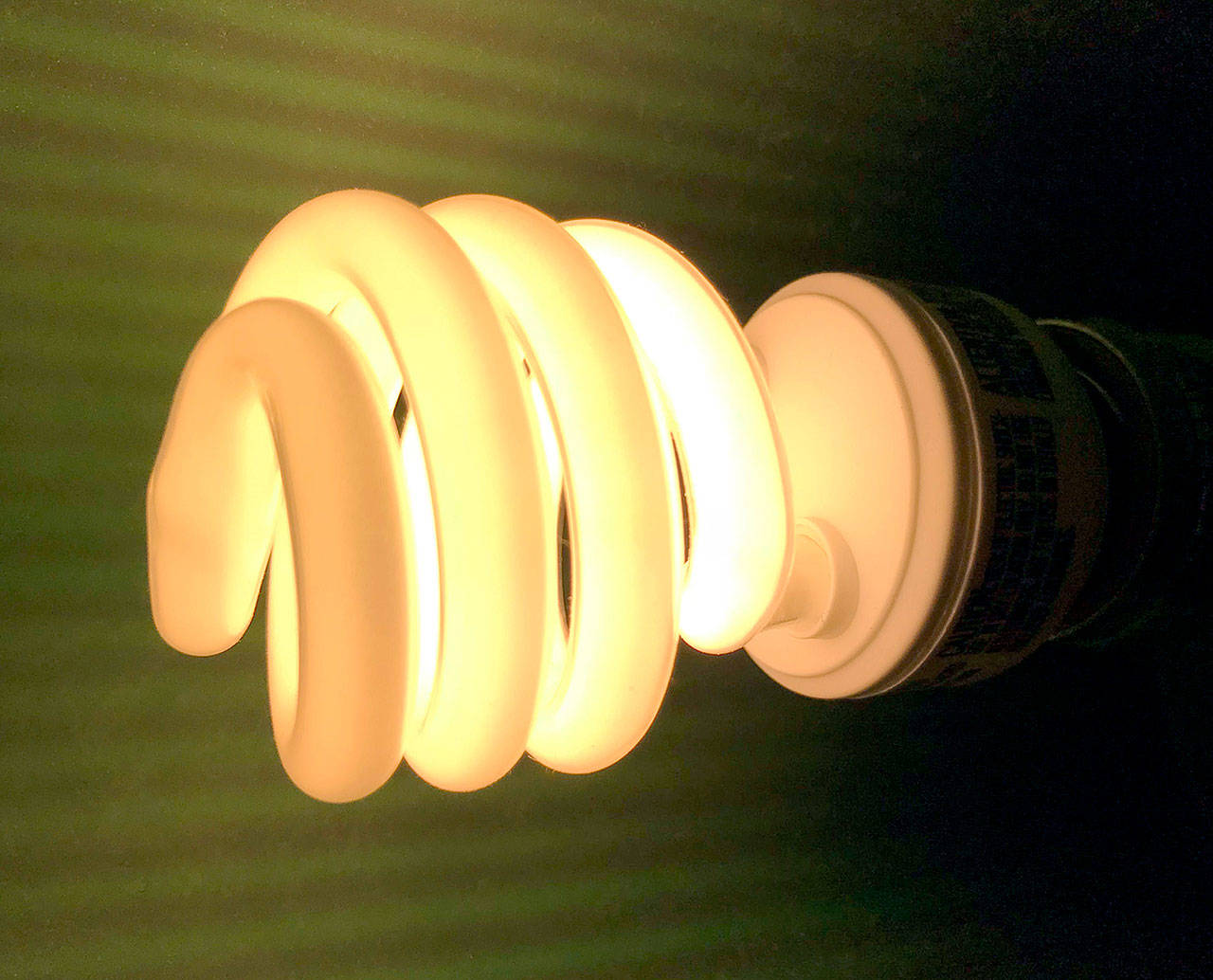EVERETT — Phil Beardsley got a surprise last week when he bought some fluorescent lights at a home improvement store.
The Lake Stevens retiree was prepared to plunk down the sticker price of nearly $60 for a carton of 30 tubes. At the register, however, the amount shot up by almost 50 percent — before sales tax.
That’s how Beardsley learned about an environmental handling charge applied to all mercury-containing light bulbs sold retail in Washington.
“It was sticker shock for me,” the 84-year-old said. “And it was sticker shock for the cashiers, too. They couldn’t figure out the additional costs.”
Even people in the know might have had cause for wonder. The environmental handling charge increased to 95 cents per bulb on Feb. 1, nearly quadruple the original 25-cent fee.
What’s happening is the result of new lighting technology and declining popularity of older-style bulbs.
The handling charge pays for a program that recycles mercury in certain energy-efficient light bulbs, so the toxic element doesn’t pile up in the environment or enter the human food chain. Economic factors have pushed up the handling charge dramatically. That could eventually jeopardize the collection program the charge is meant to support.
“We’re talking with the manufacturers to see if we can prevent any future increases,” said Andy Wineke, a spokesman for the state Department of Ecology, which oversees the recycling program. “They want to keep the program running, we want to keep the program running. We’re going to see what else we can do.”
Since 2013, it’s been illegal in Washington to throw mercury light bulbs into the trash. In 2014, state lawmakers authorized the environmental handling charge. It took took effect Jan. 1, 2015.
The charge pays for one of Washington’s two state-mandated product stewardship programs — a system for managing the waste stream that arises from categories of spent or obsolete consumer products.
The closest equivalent is E-Cycle Washington, which encourages responsible computer and electronics recycling, but uses a different funding mechanism. Paint manufacturers have pushed Washington’s Legislature to create a paint take-back program, similar to what Oregon and some other states have adopted.
Washington’s mercury light program mainly applies to the squiggly shaped compact fluorescent lamps, also known as CFLs, and to fluorescent tube lighting. Each bulb or tube contains a small amount of mercury. With millions sold, the potential for harm adds up. Even so, by using less electricity, CFLs help prevent mercury from entering the atmosphere in the form of emissions from coal-burning power plants.
The state’s collection program for mercury bulbs is known as LightRecycle Washington. It’s run by PCA Product Stewardship Inc., a nonprofit affiliated with the manufacturing industry with ties to similar organizations in Canada.
Washington’s program offers 250 collection sites around the state, many at hardware stores, battery stores and garbage dumps. Old lights are shipped to EcoLights in Seattle, a recycling plant where they’re crushed and the mercury is extracted for reuse.
“If you’re making a product, there should be a responsibility for what’s happening at the end of that product’s useful life,” said the Ecology Department’s Wineke. “Recycling them is the right thing to do.”
CFLs last about 10 times longer than classic incandescent light bulbs and use one-fourth the energy, according to the Snohomish County Public Utility District. That technology has been losing favor with consumers as even-more efficient LEDs have dropped in price.
LEDs — an abbreviation for Light-Emitting Diode — last up to 25 times longer than incandescent bulbs and use one-tenth the energy. They also provide better light than the mercury-containing curlicue bulbs, to most eyes.
Manufacturers reported nearly 5.5 million mercury lights sold in Washington stores during 2016. That’s down from 8.4 million in 2015, a drop of more than one-third in just one year.
“It fell faster than what they anticipated,” said Peter Thermos, program manager for LightRecycle Washington.
That’s a problem for LightRecycle — one that wasn’t foreseen in 2015, when the original fee was imposed on each bulb sold.
“At that time it was 25 cents,” Thermos said. “What’s happened since then is there has been a dramatic decrease in the sale of CFLs.”
As mercury lights age and burn out, more are getting discarded — pushing up costs. LightRecycle collected 988,449 bulbs in 2015, 1,181,616 in 2016 and 1,317,787 in 2017.
To adjust, the bulb fee went to 50 cents last year, before the more recent rise. The Department of Ecology approved the increases after reviewing documentation from the collection program.
“The program has financial problems,” Thermos said. “There will need to be changes either somewhere in the way the manufacturers contribute to it or a change in the law for that program to be continued through the sunset date of 2025.”
Beardsley, the light-bulb shopper from Lake Stevens, said he’s OK with paying the charge on the lights. He just wishes it would have been included when he saw the price tag on the shelf.
Noah Haglund: 425-339-3465; nhaglund@heraldnet.com. Twitter: @NWhaglund.
Talk to us
> Give us your news tips.
> Send us a letter to the editor.
> More Herald contact information.

























